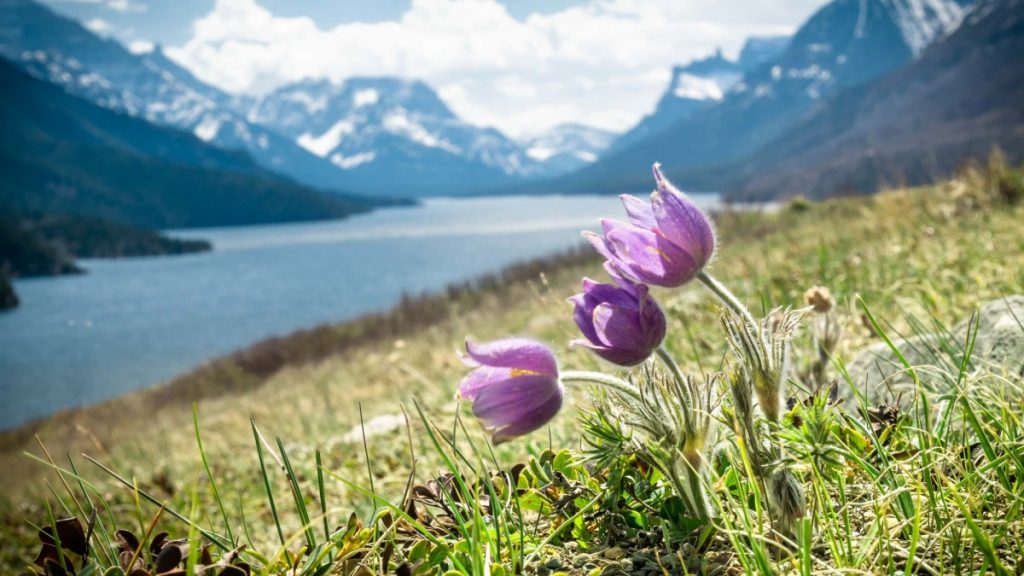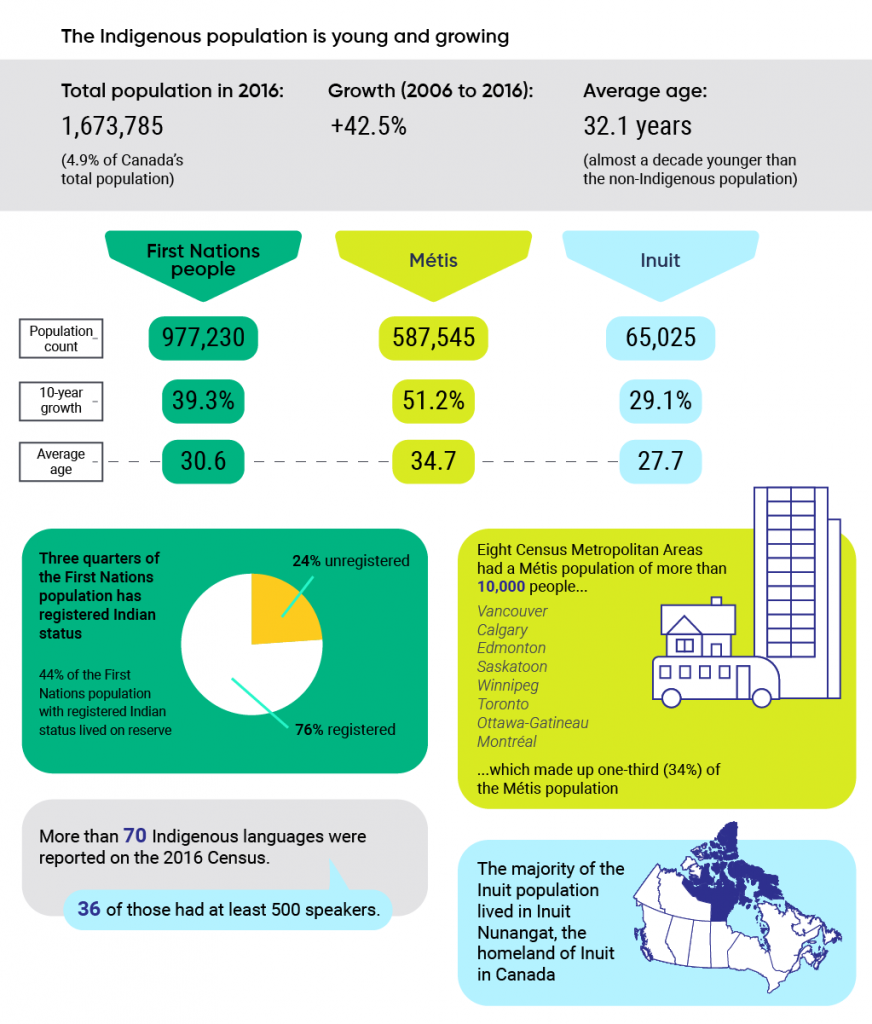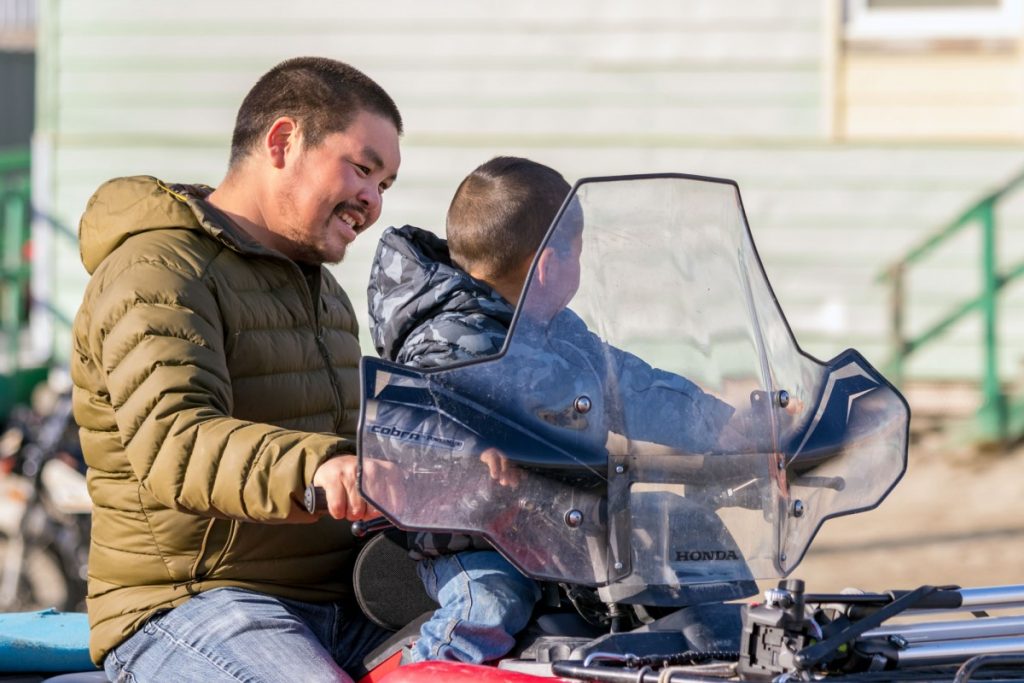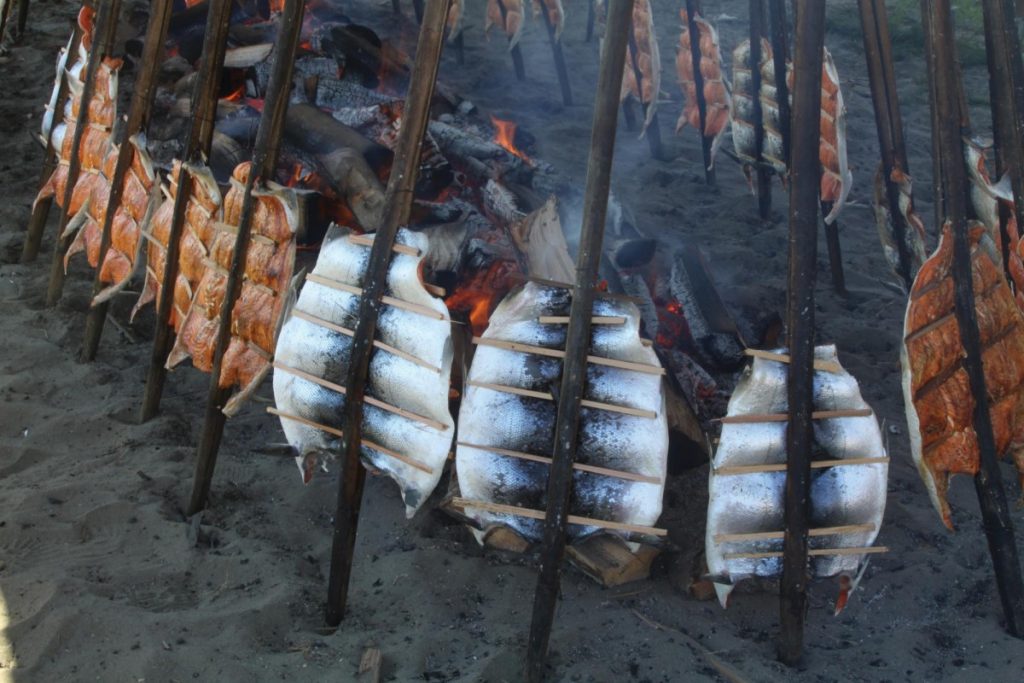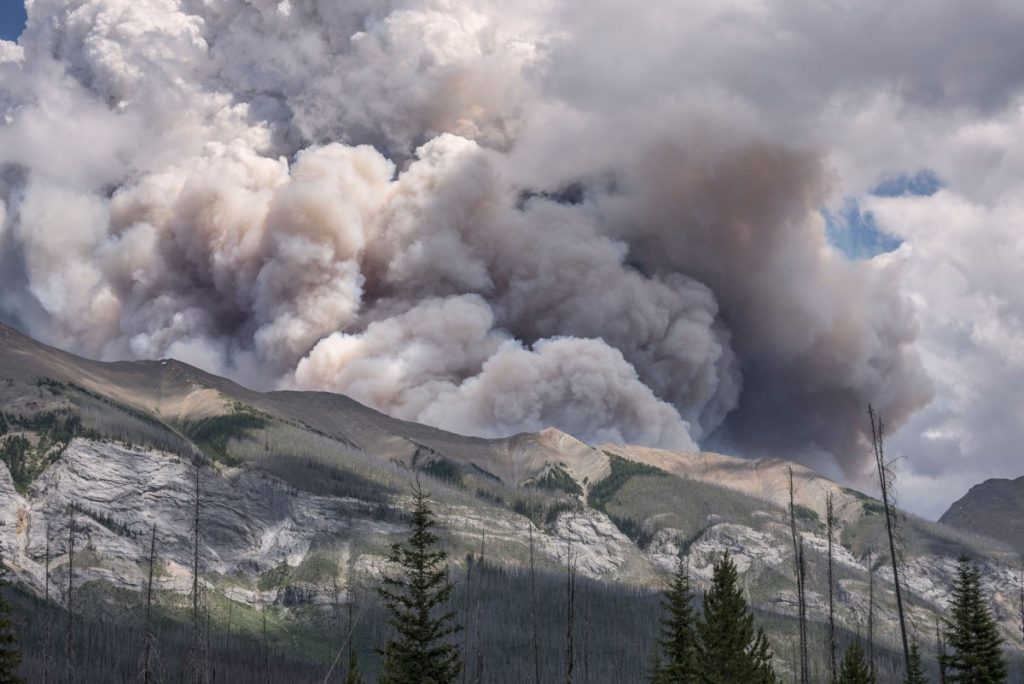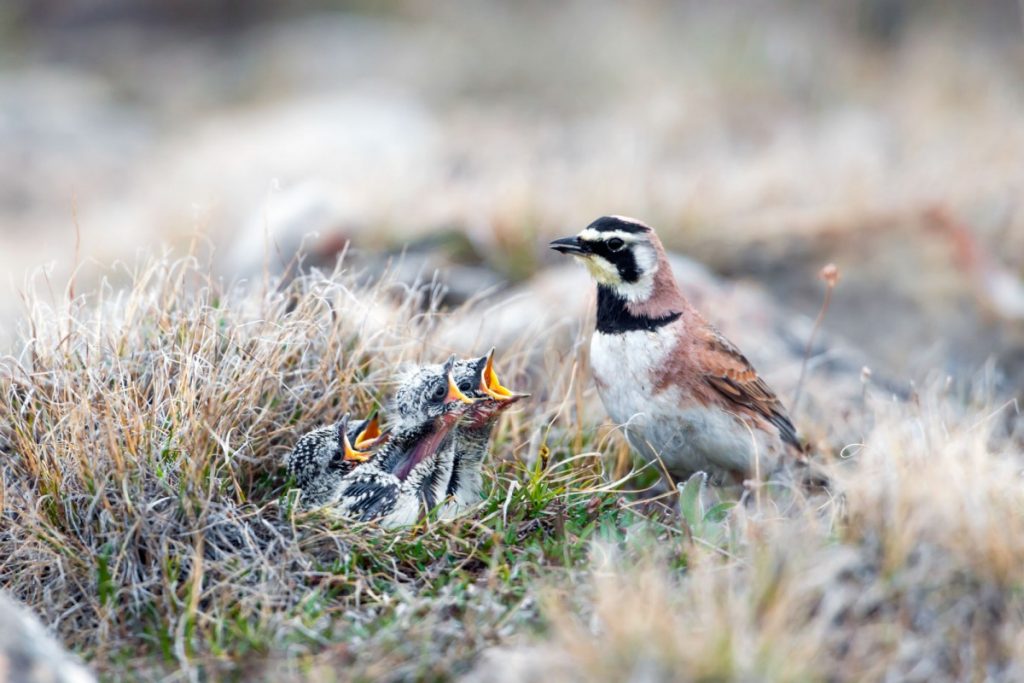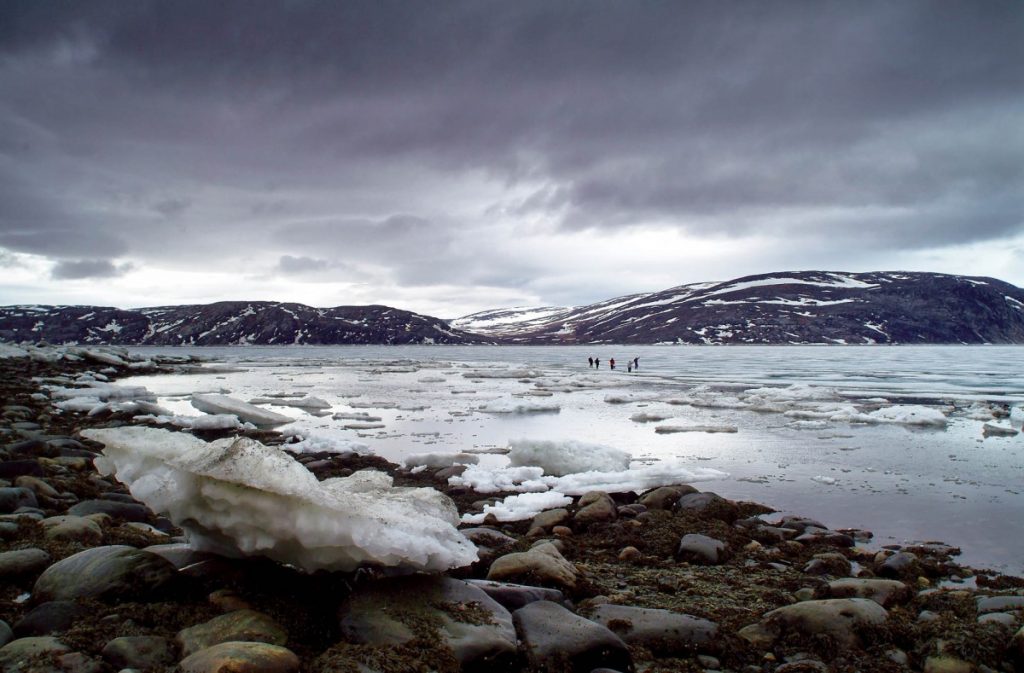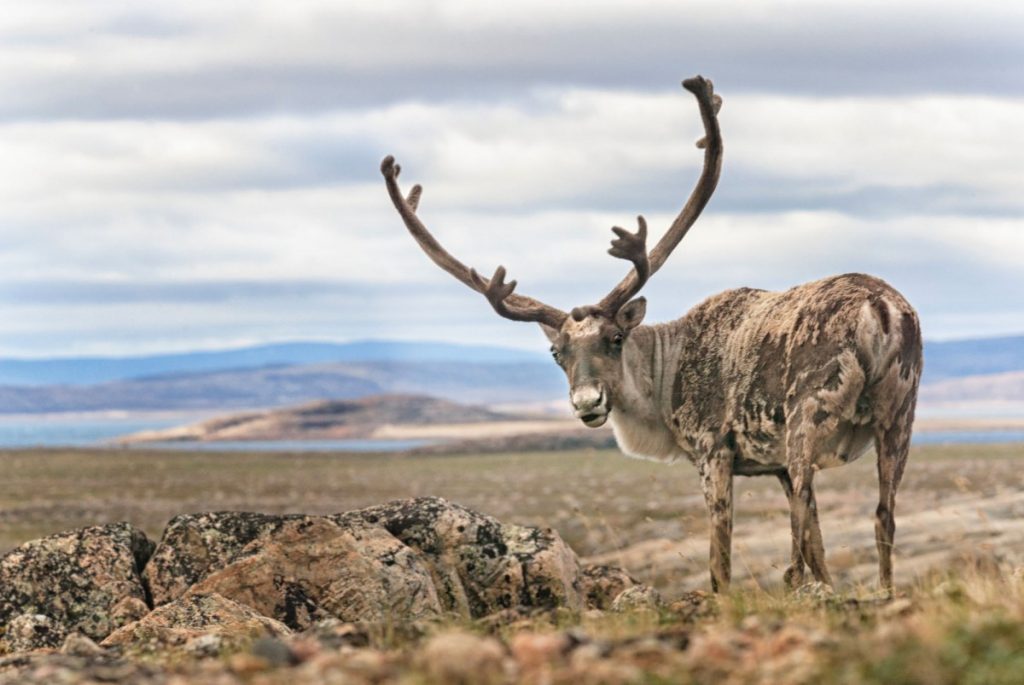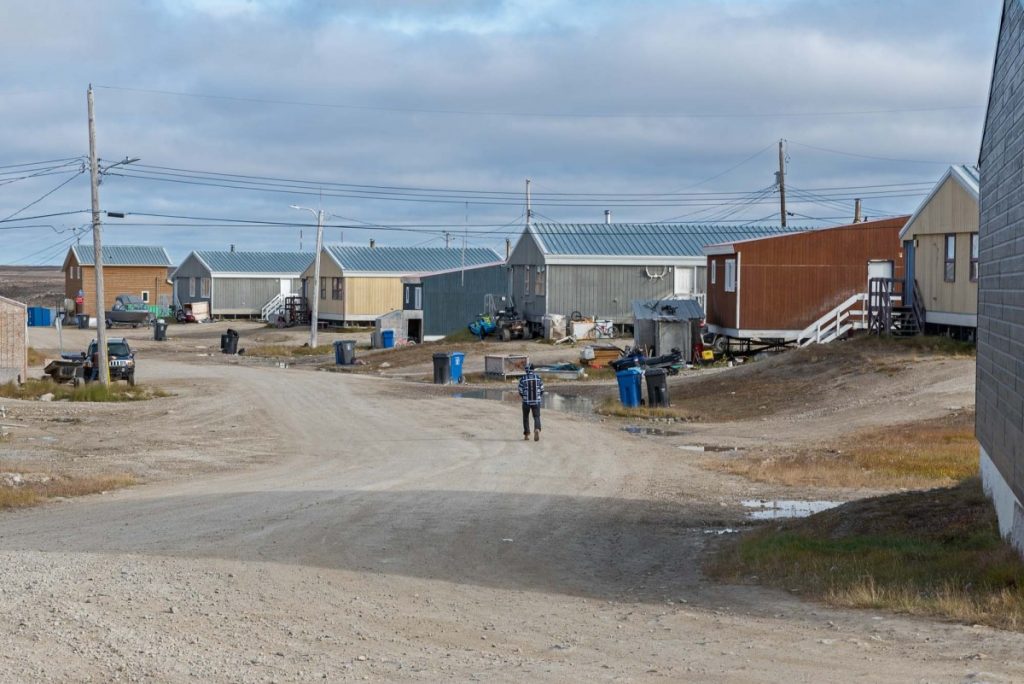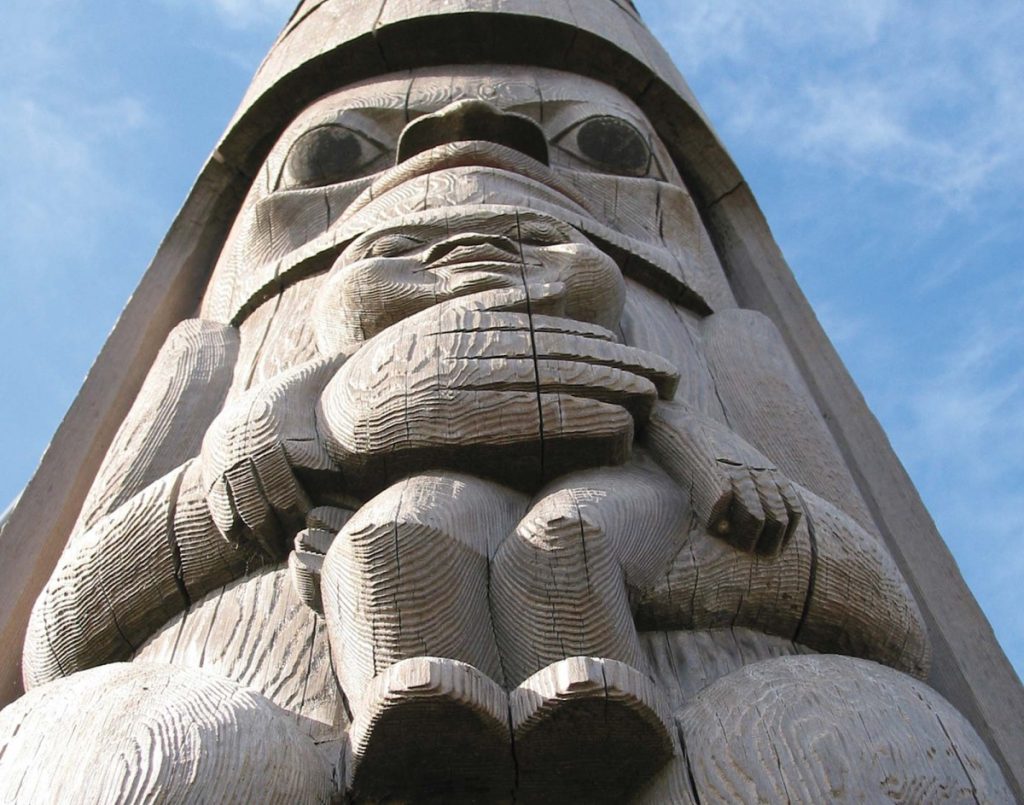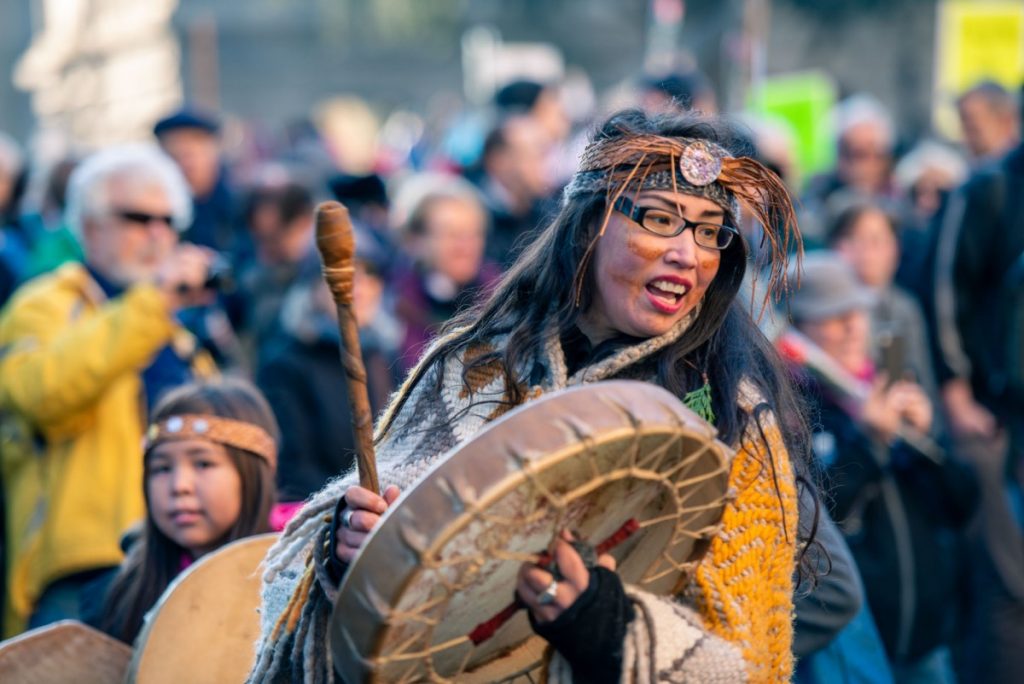“The sea ice has really changed. I used to travel both by dog team and skidoo to and from Pond Inlet. In my recent trip, the snow has changed. The snow on top and snow condition on top has changed. Normally, in the spring, the snow on the top will freeze at night. This process is called qiqqsuqqaqtuq. This frozen layer can be seen when the day just starts getting daylight; it is sparkling because of the recent freeze up on top. I noticed it wasn’t like that anymore. This process, the freezing, isn’t happening anymore.”
First Nations, Inuit, and Métis peoples are uniquely sensitive to the health impacts of climate-related events, given their close reliance on the environment for their sustenance, livelihoods, and cultural practices (Ford, 2012; Kipp et al., 2019b). The related health impacts are experienced both directly and indirectly. In the Arctic, rising temperatures are affecting permafrost stability, ground snow cover, sea ice extent and thickness, sea levels, and weather patterns (Ford et al., 2014; Durkalec et al., 2015; ITK, 2016). These changes are exacerbating the loss of knowledge and land skills related to weather prediction, transportation to hunting grounds, and wildlife patterns, leading to increased risk of injuries and fatalities, more search and rescue missions, and reduced access to country foods (Lemelin et al., 2010; Andrachuk & Smit, 2012; Pearce et al., 2012; Sheedy, 2018). For example, the rate of unintentional injuries was more than three times higher than the Canadian average among Inuit land-users in Nunavut over the period 2006 to 2015, and the number of search and rescue operations has more than doubled over the past decade due to changes in temperature and ice (Clark et al., 2016a; Clark et al., 2016b). The loss of knowledge and land skills also threatens Inuit identity and well-being by decreasing opportunities for land- and sea-based activities and for sharing and teaching knowledge and skills, particularly for youth (ITK, 2016).
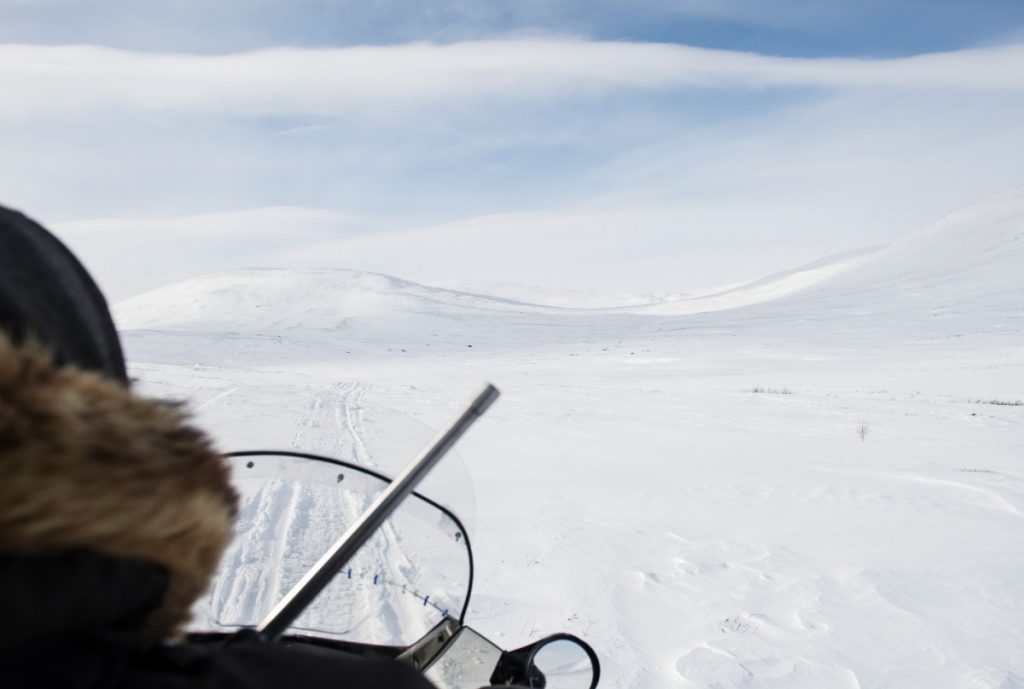
Permafrost degradation, heavy storms, and coastal erosion can result in the destruction of places that have cultural significance, with potential mental health impacts (Government of Nunavut, 2010; Government of Nunavut, 2012; Donatuto et al., 2014). Such events can also destabilize housing, pipelines, and local civic water, wastewater, and transportation infrastructure and systems, increasing the risk of injury, water-borne illnesses, and environmental contamination, as well as causing disruptions in supply chains (Government of Nunavut, 2010; Government of Nunavut, 2014; Berner et al., 2016; FRMFNMES, 2016). In the Inuvialuit hamlet of Tuktoyaktuk, for example, coastal erosion is already forcing residents to relocate their homes further inland and onto higher ground (Faris, 2019). Such impacts place additional financial strains on Inuit households and communities in the context of high living costs, low household income, low population base, and inadequate local government revenues (ITK, 2016). In response to these changes, local Inuit youth formed a collective — Tuk TV — and captured these experiences in the documentary Happening to Us, which was screened at the 25th session of the Conference of the Parties (COP 25) to the United Nations Framework Conventions on Climate Change (UNFCCC) in Madrid, Spain, in 2019.
Warming temperatures and changes in precipitation patterns have led to the increased frequency and severity of extreme weather events such as flooding, wildfires, and heat events (Berry et al., 2014; Bush & Lemmen, 2019). Some First Nations, Inuit, and Métis communities are more vulnerable to these events because of their geographic location, as well as existing socio-economic conditions and infrastructure (CIER, 2008; Christianson et al., 2012; Collier, 2015; McNeill et al., 2017). Over the period 2006 to 2016, approximately 67 First Nations communities experienced a combined total of nearly 100 flooding events, causing significant property and infrastructure damage, disruptions to community services, and impacts to health and well-being (McNeill et al., 2017).
Climate change has contributed to an increased number of extreme heat events and droughts, and to proliferation of pests such as the mountain pine beetle, which, in turn, is increasing the prevalence, magnitude, and intensity of wildfires and the devastation of forests (see Chapter 5: Air Quality). These are taking a tremendous social, psychological, emotional, and financial toll on First Nations and Métis communities across Canada (Scharbach & Waldram, 2016; Howard et al., 2017; Dodd et al., 2018a; Dodd et al., 2018b; ISC, 2018). Many Indigenous communities are located in regions that are expected to see increased wildfire activity over the next 40 years, including parts of British Columbia’s coast and Haida Gwaii, Northeastern Alberta, central Saskatchewan, Southern Manitoba and Ontario, and the Northwest Territories (B.J. Stocks Wildfire Investigations Ltd., 2013).
The increased prevalence and severity of extreme weather and climate-related events can have both direct and indirect impacts on human health (see Chapter 3: Natural Hazards). Extreme weather events can lead directly to increased injuries and fatalities (Kipp et al., 2019b). Droughts can affect respiratory health, mental health, exposure to environmental toxins, food security, water security, and rates of injury and infectious diseases, as well as causing increased stress on water treatment systems (Yusa et al., 2015). Flooding can result in water and food contamination from the release of environmental contaminants, bacteria, and other pathogens (Patrick, 2011; Huseman & Short, 2012; Daley et al., 2015). This can lead to increased water- and food-borne infections, skin conditions, and birth defects, as well as obesity, diabetes, hypertension, mental stress, heart disease, liver disease, kidney problems, neurological problems, immunopathology, cancers, thyroid conditions, and infant mortality (Bradford et al., 2016). Flooding and wildfires can damage fish and wildlife habitat important for species reproduction, with subsequent impacts on food security (Kipp et al., 2019b). Wildfires can degrade air quality, contributing to high rates of respiratory and cardiovascular diseases (Liu et al., 2015; Reid et al., 2016), as well as leading to psychological impacts such as stress, anxiety, and depression (Cunsolo Willox et al., 2015; Dodd et al., 2018a; Dodd et al., 2018b; Manning & Clayton, 2018). Extreme heat can result in heat-related illnesses and mortality, especially in Southern Canada and urban centres (Council of Canadian Academies, 2019). While research on Indigenous populations and extreme heat is limited, a comparative study of climate-related morbidities among urban and rural Indigenous populations in Ontario found that urban populations may be at greater risk because of inequities associated with access to health services, health status, poverty, housing, and political marginalization (Tam, 2013).
Climate-related emergencies can also lead to temporary evacuations or long-term displacements from traditional territories, which affect all aspects of Indigenous health and well-being. They disrupt lives; create financial hardship; increase stress, anxiety, and post-traumatic stress disorder; and can bring back historical traumas associated with forced relocations and government interventions in the lives of Indigenous Peoples (Thompson et al., 2014; Scharbach & Waldram, 2016; Bedard & Richards, 2018; Dicken, 2018; Hassler et al., 2019). First Nations people living on reserve, in particular, have been disproportionately affected by displacement due to climate-related events. For example, over the period April 2017 to March 2019, nearly 15,000 First Nations residents were evacuated because of floods, fires, and extreme heat (ISC, 2019, as cited in Parliamentary Information and Research Service, 2020). Going forward, emergency responses to these climate-related events will require adequate funding for emergency planning activities; capacity-building and training; the inclusion of Indigenous Peoples in coordination activities; the use of Indigenous knowledges and expertise; direct and immediate emergency response; evacuation processes that are sensitive to Indigenous Peoples; as well as ongoing efforts for Indigenous communities to recover from such events (Standing Committee on Indigenous and Northern Affairs, 2018).
